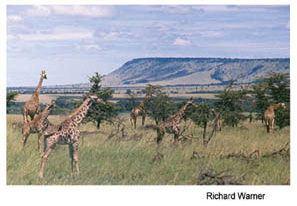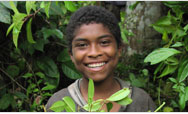Approach to Conservation
 |
USAID helps countries manage individual species and
ecosystems, particularly with local community development. |
USAID is helping developing countries maintain biologically diverse habitats and environmental services while supporting sustainable development and economic growth. USAID’s emphasis in biodiversity conservation is to help countries maintain and manage the variety of species, genetic resources, and ecosystems, where they exist — in natural settings such as forests, grasslands, wetlands, and coastal habitats. USAID’s conservation efforts help maintain individual species, and functioning ecosystems and the valuable ecological services they provide.
USAID pioneered and now supports one of the most comprehensive biodiversity conservation programs of any bilateral donor. USAID’s approach to conservation has evolved since the 1980s from programs that focused on protected area management to programs that conserve biodiversity across large landscapes using a variety of interventions. This approach recognizes that biodiversity cannot be conserved in isolated areas and that much biodiversity is not located in protected areas. This approach emphasizes that participation by local stakeholders in conservation programs is critical to their success.
USAID emphasizes developing appropriate activities to mitigate key threats to biodiversity in priority sites. Since the threats to conservation are wide-ranging, from local small-scale agriculture to industrial timber production, the toolkit for interventions is equally broad. Conservationists are as likely to negotiate the adoption of best practices for mining and logging as strengthen local enforcement capacity and implementing of environmental education programs.
The approaches the Agency applies in its biodiversity conservation programs include:
Conservationists have identified generally accepted geographic biodiversity priority areas, and the Agency contributes toward the conservation of these areas. In some countries, a mission may support the conservation of a site for national or local reasons, such as the conservation of a watershed for local economic use and clean water supply, in addition to supporting areas of global priority. The habitats conserved by Agency programs include:
Back to Top ^
|


